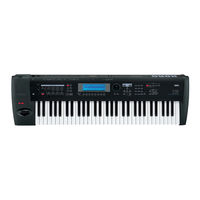
Korg TR music workstation Operation Manuals
Manuals and User Guides for Korg TR music workstation Operation. We have 1 Korg TR music workstation Operation manual available for free PDF download: Operation Manual
Korg TR music workstation Operation Operation Manual (136 pages)
Synthesizer manual
Brand: Korg
|
Category: Musical Instrument
|
Size: 2 MB
Table of Contents
Advertisement
Advertisement
